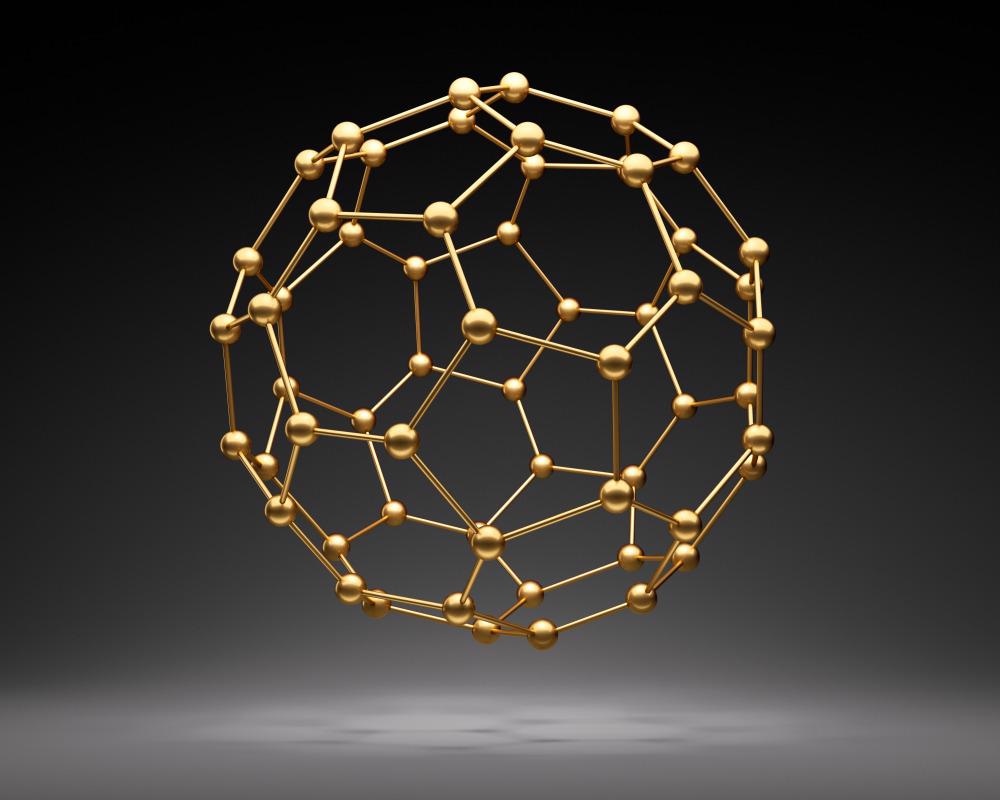Researchers from the People’s Republic of China have provided a perspective on single-molecule fullerene research, exploring several aspects of research and the materials themselves. Their study has been published in the journal ACS Materials Letters.

Study: Single-Molecule Fullerenes: Current Stage and Perspective Image Credit: peterschreiber.media/Shutterstock.com
Fullerenes
Fullerenes are an important class of materials. Their enhanced physical and chemical properties have led to their research applications in several fields. These materials were discovered in the mid-1980s. Substantial amounts of fullerenes can be produced using the arc discharge method, and because of this easy production capacity, they have been extensively studied over the past few decades.
Fullerenes are widely used in semiconductor devices due to their solubility and energy level tunability using external chemical modifications and intercalated atoms. Possessing structural stability and ease of chemical modification, many fullerenes have been incorporated into single-molecule systems to study their unique properties.
Many of these materials and their derivatives have been synthesized and categorized. Their physical and chemical properties have been explored by incorporating them into single-molecule junctions as well as being used to realize single-molecule device functionalization.
Single-molecule Science
Single-molecule science has become a key research area in materials science. This field studies the properties of individual molecules and has been applied in many areas due to its scientific significance. Techniques used in this field can reveal unique chemical and physical effects at the single-molecule level of materials. Using single-molecule measurements, averaging effects that would otherwise mask signals can be ruled out.
Dynamic molecular processes that would otherwise be difficult to elucidate using other techniques are revealed using single-molecule scientific methods. Single-molecule optical, electronic, and mechanical approaches have been developed in recent years. Electrical techniques have several benefits, including the prospect of constructing functional single-molecule devices such as transistors, rectifiers, and switches. Selection of materials is a key consideration.
The Review
The authors have provided an overview of single-molecule fullerene materials, their properties, fabrication methods, and potential innovative applications. Properties such as spin, nanomechanics, and charge transport are discussed in-depth in the study. Proposed functional devices include single-molecule switches and thermoelectric devices. Challenges with the technology and materials and potential solutions, outlooks, and research directions are highlighted.
The authors have performed a comprehensive review of the current literature. One hundred forty-nine studies from the past few decades have been investigated in the current paper providing representative work in the field of materials science and associated disciplines.
The authors have highlighted single-molecule electrical techniques, including electro-migration junctions and mechanical break junctions. Single-molecule electrical techniques measure the electrical properties of single fullerene molecules and provide information that helps to realize the functional applications of single-molecule fullerenes. Processes and penetration principles of single-molecule devices have been discussed in detail, along with the characteristics of single-mode detection and components of these techniques.
Single fullerene molecule properties such as their vibrational properties, Coulomb blockade effects, and thermoelectric effects have been introduced in the review, and the interactions between fullerenes and electrodes have been explored in detail. These interactions include proximity superconductivity and quantum phase transitions.
The authors have noted that some functional single-molecule devices have been proposed in the current body of research which takes advantage of the properties of single-molecule fullerenes. Amongst these, superconductors have seen the incorporation of fullerene molecules. Another research direction is investigating electrode materials for these devices, with carbon-based materials such as carbon nanotubes garnering some attention. Device stability can be improved by introducing reliable anchor groups and strong chemical bonds.
There are some challenges that need to be overcome in single-molecule fullerene research to realize their commercial potential. Firstly, preparation techniques need improving. Secondly, detection systems need expanding. Thirdly, there are issues with widely applying reproducible research results.
Fabricating stable devices is a key challenge in fullerene research. It is difficult to manufacture reliable and reproducible devices using current techniques, but novel methods such as etching and electromigration techniques could enable the production of device arrays and improve single-molecule junction yield.
Developing detection platforms with multiple recognition and detection capabilities will significantly expand detection methods for single-molecule fullerenes. It has been noted by the authors that many properties of these materials cannot be studied using current detection and modulation methods. Multilevel molecular information can be elucidated using multimodal detection methods with much greater detail. Innovative technologies should be taken advantage of by researchers, and combining ultrafast electrical and detection methods will improve monitoring techniques.
Exploring new principles and applications should be a key element in future research. Fullerene cages are one such application that holds promise for future research. The field can be applied in cutting-edge quantum computing, quantum sensing, and atomic clock technologies. In summary, the paper has provided a comprehensive review of current research perspectives in the field of single-molecule fullerene research and provides vital information for future research teams.
More from AZoM: How to Assemble an Atomic Force Microscope
Further Reading
Nie, H et al. (2022) Single-Molecule Fullerenes: Current Stage and Perspective ACS Materials Letters 4 pp. 1037-1052 [online] pubs.acs.org. Available at: https://pubs.acs.org/doi/10.1021/acsmaterialslett.2c00247
Disclaimer: The views expressed here are those of the author expressed in their private capacity and do not necessarily represent the views of AZoM.com Limited T/A AZoNetwork the owner and operator of this website. This disclaimer forms part of the Terms and conditions of use of this website.